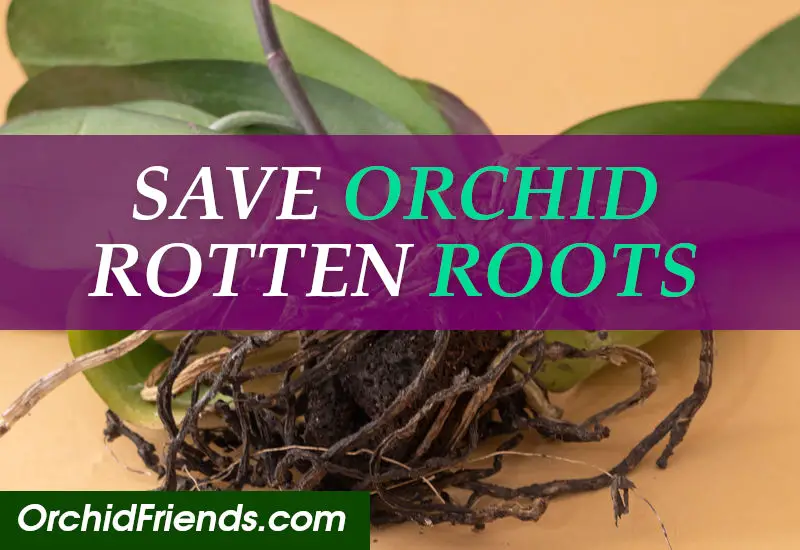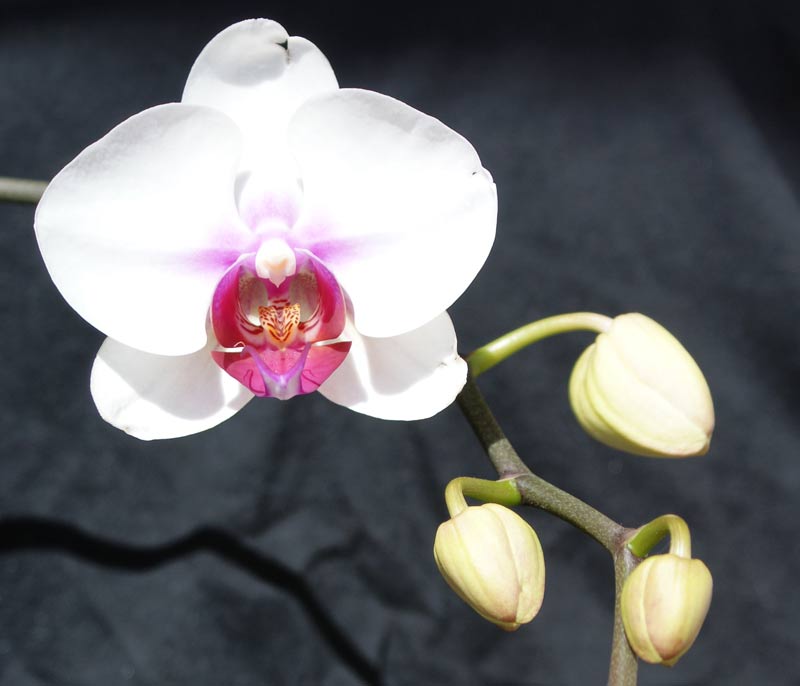
** This post is written and edited by a human being **
Here is a summarized step-by-step plan:
- Remove the Orchid from Its Pot: Gently take the orchid out of its pot and carefully inspect the roots. Any roots that are mushy, brown, black, or smell foul are rotting and need to be removed.
- Trim the Rotten Roots: Using clean, sharp scissors or pruning shears, trim away all the rotten roots. Be sure to leave any healthy, firm, and white or green roots intact. If only a few roots are healthy, it’s still possible to save the orchid.
- Disinfect the Orchid: After trimming the roots, it’s a good idea to spray the orchid’s base with a diluted solution of hydrogen peroxide (3% strength) to disinfect the plant and prevent further infection.
- Let the Orchid Dry: Allow the orchid to air dry. This helps the plant heal and prevents any remaining moisture from causing further rot.
- Re-pot in Fresh Medium: Once the orchid is dry, repot it in fresh, well-draining orchid mix (such as bark or sphagnum moss). Be sure to use a clean pot with drainage holes. Position the orchid so that the healthy roots are spread out and covered with the new medium.
- Water Lightly: After repotting, water the orchid lightly. Let the medium dry out a little before watering again. Be careful not to overwater, as the orchid will need time to regenerate new roots.
- Provide Humidity and Proper Care: Place the orchid in a humid environment, as this will encourage new root growth. A humidity tray or misting can help. Keep the orchid in bright, indirect light, and maintain temperatures between 65-75°F (18-24°C).
With patience and the right care, your moth orchid can recover from rotten roots and begin to grow new healthy roots, eventually leading to a full recovery.
Can My Orchid Be Saved?
If your orchid is showing signs of distress, such as yellowing leaves, wilting, or rotting roots, there’s still hope for recovery with the right care. The first step is to assess the orchid’s condition carefully. Trim away any damaged or rotting roots, leaves, or stems using clean, sharp scissors. Healthy roots should be firm and white or light green; discard any roots that are brown, black, or mushy.
Next, repot the orchid in fresh, well-draining orchid mix (such as bark or sphagnum moss) in a pot with drainage holes. Be sure to avoid using the old potting medium to prevent reinfection or further problems. After repotting, water the orchid lightly, making sure not to overwater, as this can stress the plant further. Orchids do best when allowed to dry out slightly between waterings.
Place the orchid in an area with bright, indirect light and maintain temperatures between 65-75°F (18-24°C) to support recovery. Orchids also thrive in higher humidity (50-70%), so consider using a humidity tray or occasional misting to help boost moisture levels.
With patience and proper care, many orchids that appear to be struggling can bounce back. It may take some time, but with the right conditions, your orchid can recover and bloom again. Just remember to monitor it closely and avoid overwatering, as root rot is a common issue that can be easily prevented.
TIP: Read the step-by-step instructions on How to save an orchid.



